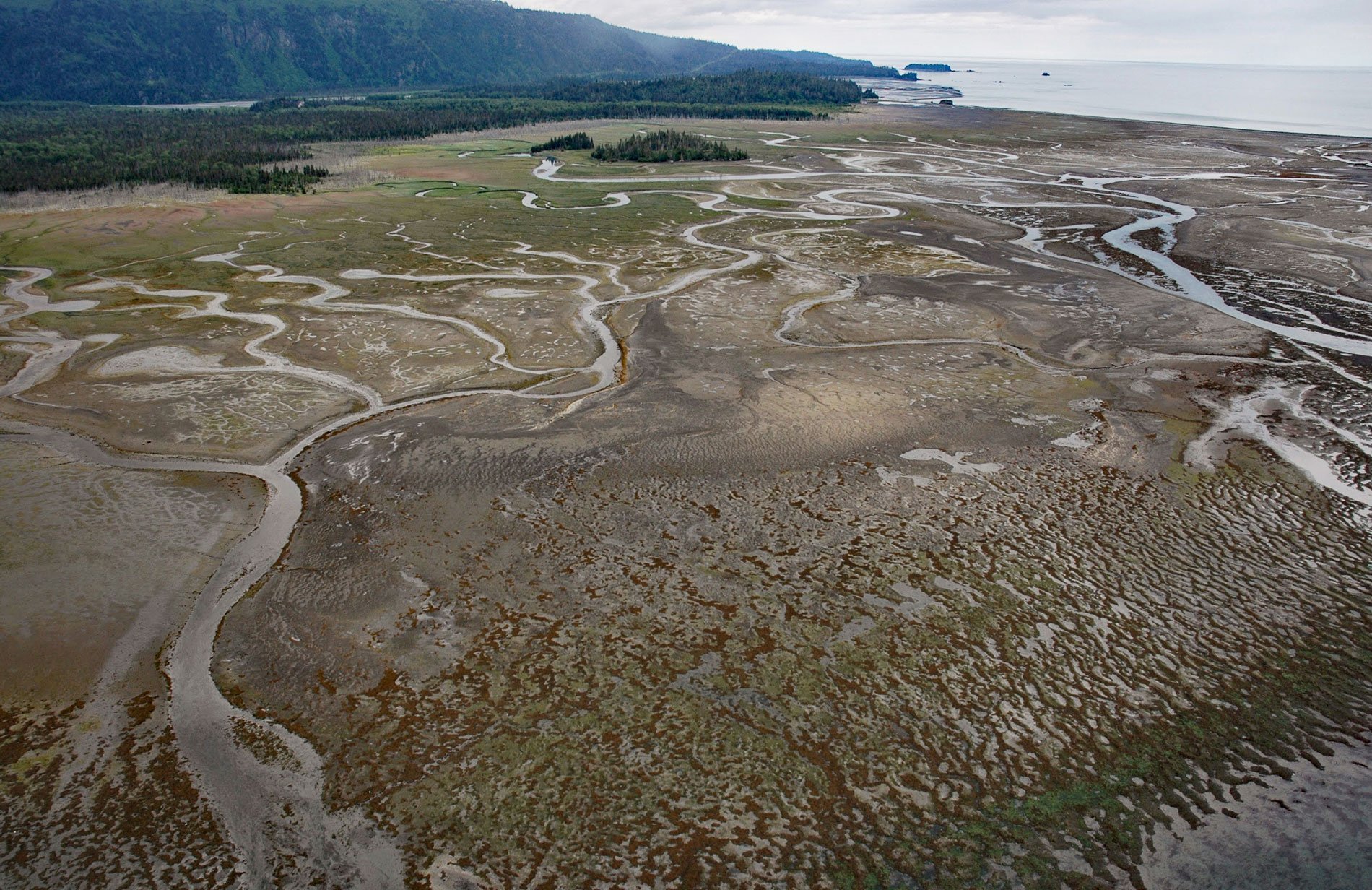China Poot Bay is a lagoon that dries at low tide to expose a tidal flat 2.5 miles (4 km) wide, located on the southeastern shore of Kachemak Bay, 15.5 miles (25 km) northeast of Seldovia and 9.5 miles (15 km) southeast of Homer, Alaska. The lagoon is separated from Kachemak Bay by a sand spit 2.5 miles (4 km) long. The local name of the bay was first reported in 1911 by G.C. Martin of the U.S. Geological Survey and is named after Henry “China” Poot who fished and trapped here.
The salt marshes of Kachemak Bay provide habitat for many wildlife species and the tidal streams support numerous small fishes including juvenile salmon. The tidal flats are also highly dynamic with elevation changes influenced by siltation and erosion, the effects of ice rafting, and changes in sea level or land elevation. Saltmarsh plants are particularly sensitive to changes in elevation that cause slight differences in tidal immersion time, soil salinity and moisture. The visible and often intricate patterns of vegetation in salt marshes are caused by the patchiness of plant species that can tolerate the specific conditions at different elevations of saltwater inundation.
The plant communities in 15 tidal marshes have been mapped along the shores of Kachemak Bay including China Poot Bay. Saltmarsh plant communities were first delineated as polygons from aerial photographs, and then a random selection was visited to identify the plants occupying the polygons by species. The results of the effort include a detailed baseline map of salt marsh plant polygons that will be used to track changes over time as polygon elevations rise or fall relative to tidal heights. Read more here and here. Explore more of China Poot Bay here:

